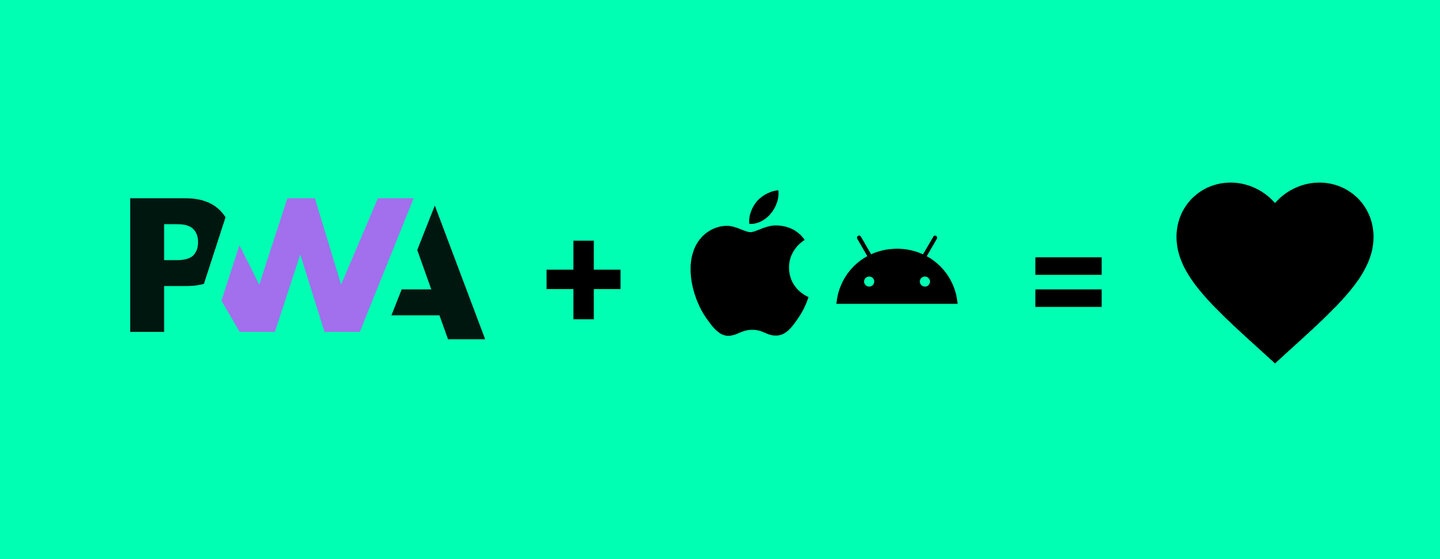Web? Native? Web-Native!
When it comes to almost any app project, the question is asked about what is the appropriate technology for the development: either native in the language of the respective target platform or web-based? Or maybe a hybrid approach with a native framework for the navigation and web views for the content?
The web-based approach has many advantages. Coordination and implementation costs are lower, since only one platform has to be developed. The widespread prejudice that web technologies are per se slower and so cannot keep up with native apps in terms of user experience is also long outdated. With the ZDF media library as a Progressive Web Application (PWS), Cellular has shown that developing web applications that feel completely like native applications is now possible. And not only that, their responsive behavior means they work just as well on desktops or on large living room screens as they do on smartphones or tablets.
Another advantage for users: you no longer need to make a detour through the app stores. Just click on a link and you are right in the middle of it - with no installation and no waiting required. Taking the stores out of the picture is also a huge advantage for the publishers. Updates can be rolled out in a matter of seconds and the application is updated while in use without the user even noticing.
This also means that the store operators have no influence on what is going on. Anyone who has followed the dispute between the email provider Hey and Apple knows the far-reaching effects that a rejected app can have on a business model. Many of the major app producers have joined forces on appfairness.org to call for a reform of the App Store principles.
The app gap still exists
However, what are the downsides of the web and why are we still developing native apps at all?
The biggest problem is still what is known as the app gap, the gap between what is possible natively and the features on the web platform. Fortunately, this gap continues to close, and at a high rate. Some time ago, Google, Microsoft, and Intel launched the Web Capabilities Project with the purpose of making the full feature set available for web apps that is also available for native apps.
This project is also known as Project Fugu, the Japanese word for puffer fish. The code name alludes to the potential dangers that a 1:1 transfer of native functionalities to the web would entail. Reconciling the functionalities with the basic principles of the web in terms of data security and privacy protection is a major challenge and requires careful planning. For some features, the path from the idea to the specification to the roll-out in popular browsers is therefore correspondingly lengthy.
Cellular uses Web Native for Mein-Bit app
A new approach has been established in order to bridge the waiting time and still not have to go without the advantages of the web: Web Native.
Good to know
Capacitor.js is a native API container that allows you to build web apps that run on iOS, Android, Electron and the web, with full access to the native features of each platform.
Unlike Cordova/PhoneGap, Capacitor takes a 'web first' approach. The core of every Capacitor app is a modern PWA, which can be implemented in the usual way regardless of the framework. Capacitor only comes into play retrospectively as soon as you reach the limits of the web platform.
The idea is simple: the application is developed as if it were a regular web application. If you want to use a functionality that still isn't available for every browser, you fall back on an abstraction layer that delegates the task to a native container if needed. This container is generated in an automated process for all desired target platforms and can be distributed through the corresponding stores.
Cellular uses precisely this approach to deploy the Bitburger beer Mein-Bit app as both a PWA and an iOS and Android app. For some functions, such as scanning an NFC chip in a restaurant, PWA users are directed to the respective app store. The download, which is often a major hurdle, can therefore be delayed until very late in the user journey. The good news: the app gap is closing here too: Web NFC is already available for Chrome Android as an origin trial and a large number of web users will be able to use it in the near future.
Conclusion: the web has made enormous leaps as a platform in recent years. Well-made web apps are almost indistinguishable with the naked eye from native applications: the PWA version of the ZDF media library developed by Cellular represents a prime example of this. The web-native approach is an excellent way to close the gaps that still exist between web and native apps.

